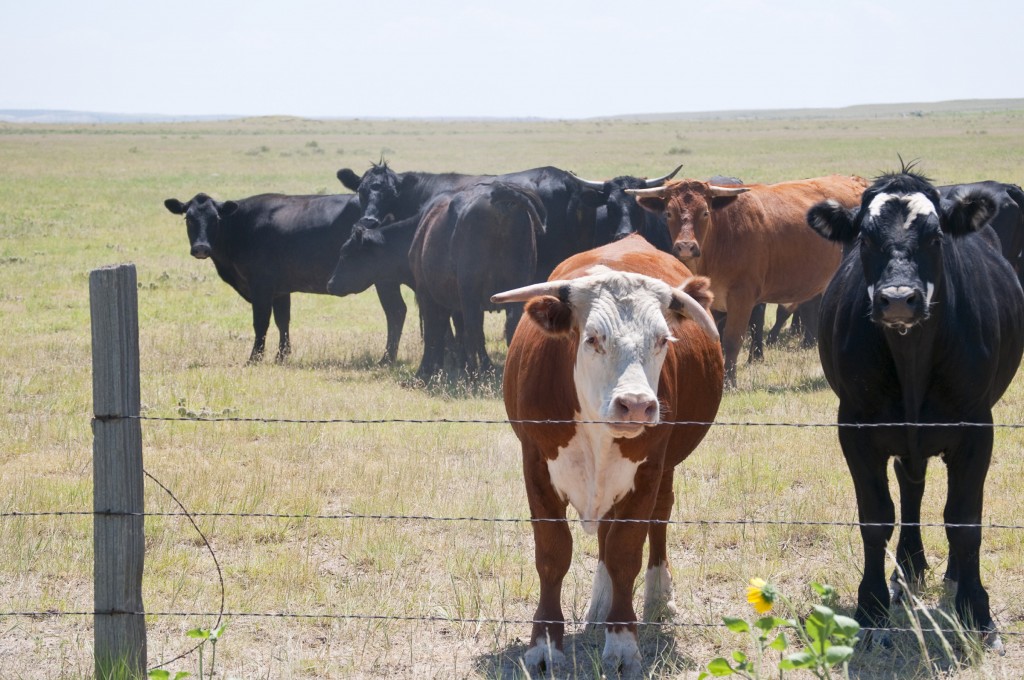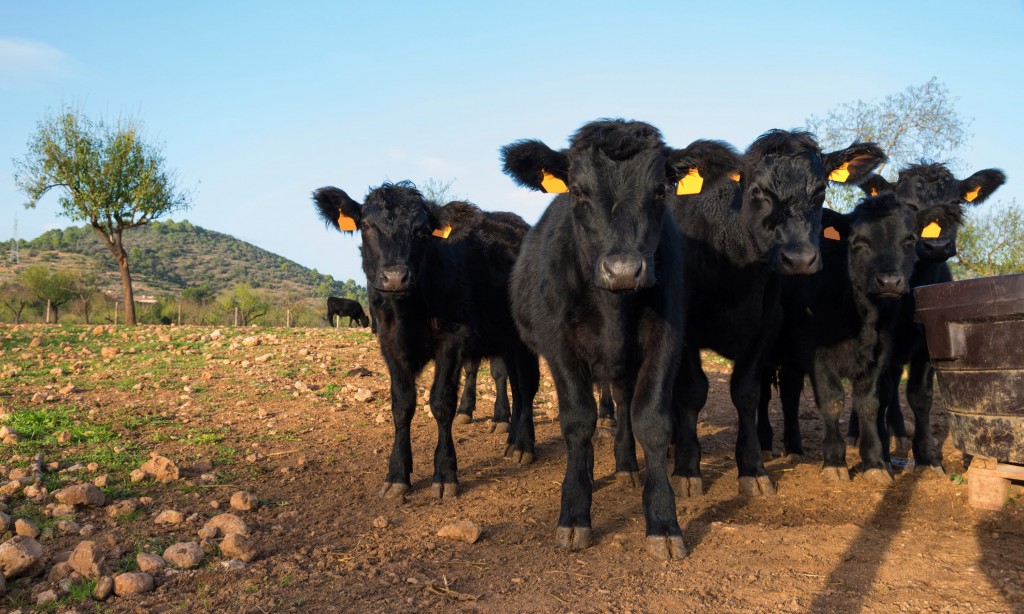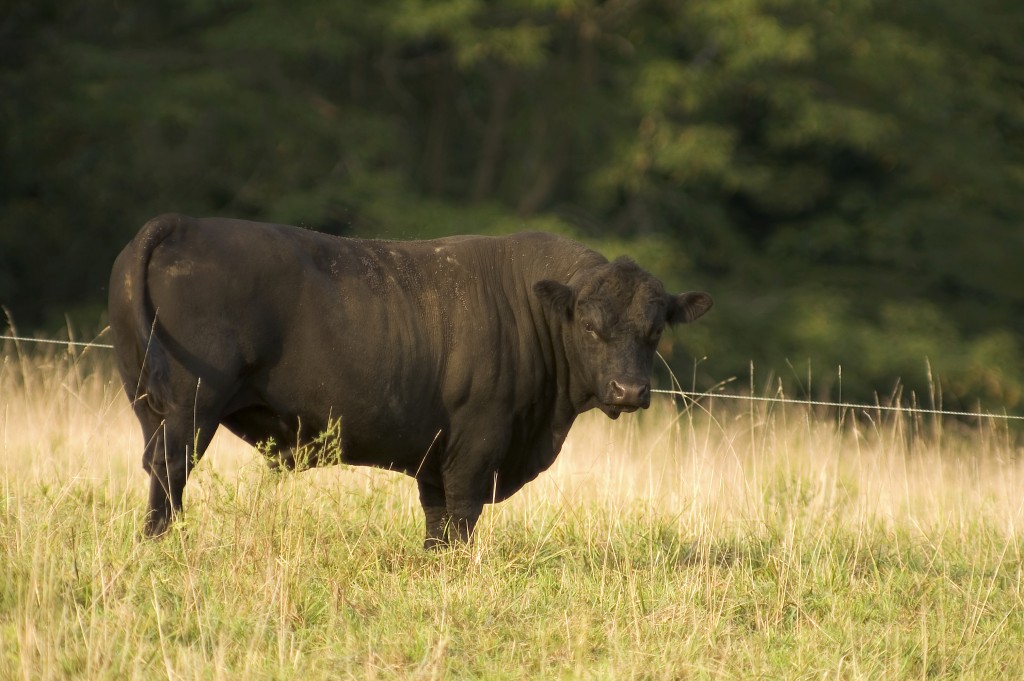Livestock
BSE (Breeding Soundness Exams)
 We perform thousands of breeding soundness exams, also known as fertility tests, on bulls each year. You need to do everything you can to get your cows to catch on their first heat cycle. Every day that a cow remains open during the breeding season means fewer pounds on the calf at the weaning. In fact, for every 21 days that your cow remains open, there is a loss of 50-60 pounds for the calf that she finally conceives. (Source: Albert Barth, WCABP manual) A bull with high fertility is the single most important member of your herd. Our BSE’s help you to identify which bulls are the most fertile, and those which are clearly unsatisfactory.
We perform thousands of breeding soundness exams, also known as fertility tests, on bulls each year. You need to do everything you can to get your cows to catch on their first heat cycle. Every day that a cow remains open during the breeding season means fewer pounds on the calf at the weaning. In fact, for every 21 days that your cow remains open, there is a loss of 50-60 pounds for the calf that she finally conceives. (Source: Albert Barth, WCABP manual) A bull with high fertility is the single most important member of your herd. Our BSE’s help you to identify which bulls are the most fertile, and those which are clearly unsatisfactory.
About Our BSE’s
Our bull testing team is comprised of one of our veterinarians and two highly skilled technicians. We perform a thorough exam on every bull while he is in the chute. We evaluate for both physical soundness and semen quality. Our testing standards adhere to those set forth by The Society for Theriogenologists (SFT). We also rely on the standards and methodologies set forth by the Western Canadian Association of Bovine Practitioners (WCABP). The SFT and the WCABP are the leading authorities on bull fertility in North America.
My bull has a small scrotal circumference. Does that matter?
In the bull, the size of the testicles is directly related to the number of sperm that a bull can produce. Of equal import, is that scrotal circumference is directly related to fertility in his offspring. This means that if you are keeping your heifers for replacements, your bulls should possess a far larger scrotal circumference than even the minimum standard.
I got a great deal on a bull with one testicle. He can still breed, right?
A bull with one testicle is often capable of getting cows pregnant. The concern is his ability to produce sperm at the levels needed to achieve a high pregnancy rate in a short amount of time. A bull with one testicle would be classified as “unsatisfactory” and would fail our BSE.
How much time does it take?
Conditions vary but we test between 6-10 bulls each hour.
Should I test my yearlings? They were tested before the sale.
We strongly recommend testing all of your bulls, including yearling bulls, and any new purchases, regardless of BSE’s performed in the past.
The last thing you want to do is figure out that there is a problem with your bull in the fall at pregnancy testing.
You should always request a copy of your bulls’ BSE results at the time of purchase.
Where should I test my bulls?
We can come to your ranch or you can haul your bulls to the clinic. Our facility features a semi load out as well as a trailer load out.
You failed one of my bulls and he got a cow pregnant! How is that possible?
Many bulls that “fail” their fertility test can still get cows pregnant, especially if there are only a few cows present. However, an unsatisfactory bull is unlikely to achieve an acceptable pregnancy rate during a short breeding season (eg. 60-90 days).
Pregnancy Testing
 Depending on what information you want, the best time to ultrasound your cows for pregnancy is when the fetus is between 1 and 4 months old. Aging the fetus with ultrasound is most accurate when the cow has been pregnant for less than 4 months. We offer both traditional palpation and ultrasound. Ultrasound can yield a great deal of information if used during the appropriate stage in pregnancy. The main advantage to ultrasound is accurate aging of the fetus. Every cow has a unique gestation length, so actual calving dates may vary. However, aging the fetus will allow you to have a very good idea of what calving interval each cow will fall into.
Depending on what information you want, the best time to ultrasound your cows for pregnancy is when the fetus is between 1 and 4 months old. Aging the fetus with ultrasound is most accurate when the cow has been pregnant for less than 4 months. We offer both traditional palpation and ultrasound. Ultrasound can yield a great deal of information if used during the appropriate stage in pregnancy. The main advantage to ultrasound is accurate aging of the fetus. Every cow has a unique gestation length, so actual calving dates may vary. However, aging the fetus will allow you to have a very good idea of what calving interval each cow will fall into.
When should I ultrasound my herd?
Every operation is unique and the answer to this question is best determined by having a discussion with Dr. Bialon regarding what you hope to achieve with ultrasound. That being said, Dr. Bialon prefers to ultrasound when the majority of the herd is bred between 35 and 120 days. After 120 days, a cow can still be called pregnant or open, but the ability age accurately diminishes.
Trich Testing
 Tritrichomonas foetus, or “Trich,” is a protozoa that is found in the reproductive tracts of infected bulls and cows. The ideal time to test for trich is 3-6 weeks after the bulls have been removed from the cows. We can trich test bulls any time of year. The best time to trich test your bulls is 4-6 weeks after the breeding season. Trichomoniasis is a protozoal organism and it is shed in the highest numbers one month after the bull is done breeding. Many producers elect to trich test at the same time that they fertility test.
Tritrichomonas foetus, or “Trich,” is a protozoa that is found in the reproductive tracts of infected bulls and cows. The ideal time to test for trich is 3-6 weeks after the bulls have been removed from the cows. We can trich test bulls any time of year. The best time to trich test your bulls is 4-6 weeks after the breeding season. Trichomoniasis is a protozoal organism and it is shed in the highest numbers one month after the bull is done breeding. Many producers elect to trich test at the same time that they fertility test.
The Montana Department of Livestock
How does the new PCR test work?
With the bull restrained in the chute, we open the full bottom side panel so that we have access to the underbelly and the legs. We use a pipette and syringe to scrape the lining of the prepuce. The sample is then submitted for PCR testing. In the past, a live organism was required. Now, we can use PCR testing to replicate and detect any DNA that is present in the sample. Sample handling is very important and the sample is shipped overnight to a reputable lab for testing. We then place a steel USDA tag in the bull’s ear. This tag is an individual ID that belongs to that specific bull.
How does my herd become infected?
Trich is an sexually transmitted disease. Cows and bulls contract the disease from breeding an infected animal. Often times, an infected bull is responsible for introducing the infection to a herd.
Why do I care?
Trich can be economically devastating. An infected cow will abort, come back into estrus and get bred again, and abort again. This leads to a poor breed up rate, and an extended calving season. In our experience, trich infection has not been immediately apparent in infected herd. The conception rate at pregnancy testing tends to be lower than average for the first year or two. Then the conception rate drops dramatically by 20-50%.
Is there a cure?
The organism lives in the preputial lining of the bull’s penis. Once a bull is infected, he should be culled. Cows can “clean” up and eventually become pregnant. However, culling any late or open cows is recommended.
Have you seen any animals with Trich lately?
Big Horn County, Yellowstone County, Pondera County, and Glacier County are four counties that have been deemed as “higher risk” areas of exposure by the Montana Department of Livestock. Non-virgin bulls moving out of these counties need to be trich tested first.
Is there a vaccine?
A vaccine for trich does exist. The vaccine does not protect bulls from becoming infected. The vaccine is only useful in very specific situations where the risk of exposure is very high. More information is available at the Boehringer Ingelheim website:
http://www.bi-vetmedica.com/species/cattle/products/TrichGuard.html
How do I prevent Trich?
The Montana Board of Livestock has a recommended list of “best management practices.” They are as follows:
- Use of only virgin bulls or bulls less than 4 years old with an annual test.
- Define your breeding season; limit to 60-90 days if possible.
- Culling of open females.
- Allow only virgin heifers or pairs onto common grazing pastures, or cows that have been away from the bull more than 120 days.
- Know the disease status and herd health programs of all herds mixing with yours.
- Use your veterinarian to determine reproductive health of your herd, especially by pregnancy checking females and testing all bulls for trich and other reproductive diseases. Work with your veterinarian to develop a reproductive herd health plan.
- Avoid purchasing open or short bred cows (less than 120 days) to mix with your herd.


